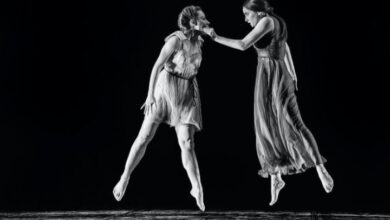Silent Stories: DSLR Techniques for Narrative Photography

Title: Silent Stories: DSLR Techniques for Narrative Photography
Silent Stories: DSLR Techniques for Narrative Photography
Introduction:
Whether you are an aspiring photographer or a seasoned pro, mastering the art of narrative photography can take your storytelling skills to new heights. In this blog post, we will explore the world of narrative photography and discuss the DSLR techniques that can help you capture captivating and evocative images that tell a silent story.
What is Narrative Photography?
Narrative photography is a form of visual storytelling where a series of images are used to convey a story or evoke emotions. It goes beyond capturing a single moment and involves strategic planning, composition, and sequencing of photographs to create a coherent and compelling narrative.
DSLR Techniques for Narrative Photography
1. Selective Focus
One of the first techniques to master is selective focus. By intentionally blurring the background or certain elements in a photograph, you can draw the viewer’s attention to the main subject and enhance the storytelling aspect of the image. Experiment with different aperture settings and focal lengths to achieve the desired effect.
2. Lighting and Shadows
Lighting plays a crucial role in narrative photography. It can set the mood, create depth, and emphasize certain elements in the frame. Utilize natural light or experiment with artificial lighting techniques to create dramatic effects that enhance the story you want to tell.
3. Use of Color and Tone
Color and tone can play a significant role in conveying emotions and setting the overall mood of your photographs. Experiment with different color schemes and tones to evoke specific feelings or create a certain atmosphere that complements your narrative.
4. Composition and Framing
The way you compose and frame your shots can greatly impact the narrative of your photographs. Consider the rule of thirds, leading lines, and symmetry to guide the viewer’s eye and create a visually appealing composition that aligns with your story.
5. Sequencing and Storyboarding
Narrative photography often involves a series of images that work together to tell a story. Plan your shots ahead of time and create a storyboard to ensure a coherent flow of images. Pay attention to details such as transitions, pacing, and the relationship between individual photographs to create a compelling visual narrative.
FAQs (Frequently Asked Questions)
FAQ 1: Can I achieve narrative photography with a smartphone camera?
Answer: While DSLRs offer more control and flexibility, it is still possible to achieve narrative photography with a smartphone camera. Focus on composition, lighting, and storytelling techniques to capture compelling images through your smartphone.
FAQ 2: How can I improve my storytelling skills in photography?
Answer: Apart from technical skills, storytelling in photography requires observation, patience, and the ability to capture moments that evoke emotions. Practice by telling stories through your images, study the work of accomplished narrative photographers, and experiment with different techniques to find your unique voice.
FAQ 3: Are there any recommended resources for learning narrative photography?
Answer: Yes, there are several resources available to help you learn and enhance your narrative photography skills. Online tutorials, workshops, books, and communities of photographers can provide valuable insights, techniques, and inspiration to improve your storytelling abilities.
Conclusion:
Mastering the art of narrative photography with DSLR techniques allows you to capture moments that tell powerful stories without the need for words. By implementing these techniques, experimenting, and honing your skills, you can create visually compelling images that leave a lasting impact on your viewers.
Remember, practice makes perfect, so grab your DSLR and start telling your own silent stories through the lens!




